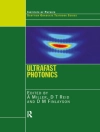About IFMBE The International Federation for Medical and Biological Engineering (IFMBE) was established in 1959 to provide medical and biological engineering with a vehicle for international collaboration in research and practice of the profession. The F- eration has a long history of encouraging and promoting international cooperation and collaboration in the use of science and engineering for improving health and quality of life. The IFMBE is an organization with membership of national and transnational societies and an International Academy. At present there are 52 national members and 5 transnational members representing a total membership in excess of 120 000 worldwide. An observer category is provided to groups or organizations considering formal affiliation. Personal membership is possible for individuals living in countries without a member society The International Academy includes individuals who have been recognized by the IFMBE for their outstanding contributions to biomedical engineering. Objectives The objectives of the International Federation for Medical and Biological Engineering are scientific, technological, literary, and educational. Within the field of medical, clinical and biological engineering it’s aims are to encourage research and the application of knowledge, and to disseminate information and promote collaboration.
表中的内容
Communication I.- Modelling and Characterisation of a Compact Sensor Antenna for Healthcare Applications.- Performance Analysis of 802.15.4 and 802.11e for Body Sensor Network Applications.- Low Energy On-Body Communication for BSN.- Smart Textiles.- Bioimpedance Spectroscopy with textile Electrodes for a continuous Monitoring Application.- Contactless EMG sensors embroidered onto textile.- Bio-sensing textiles – Wearable Chemical Biosensors for Health Monitoring.- Posters.- Wearable Joint-Angle Measurement with Modulated Magnetic Field from L/C Oscilators.- In-body Wireless Communication Made Real.- The PSI Board: Realizing a Phone-Centric Body Sensor Network.- Groggy Wakeup – Automated Generation of Power-Efficient Detection Hierarchies for Wearable Sensors.- A Low Power Compression Processor for Body Sensor Network System.- Path Loss For Short Range Telemetry.- Acoustic Monitoring of Lung Sounds for the Detection of One Lung Intubation.- Automatic Step Detection in the Accelerometer Signal.- EMFi in wearable audio applications.- Policy-based Management for Body-Sensor Networks.- Design Issues and Implementation of Query-Driven Healthcare System Using Wireless Sensor Ad-hoc Network.- The Development of an In-Vivo Active Pressure Monitoring System.- Optimizing On-Chip Piezoelectric Energy Scavenging for Integration of Medical Sensors with Low-Power Wireless Networks.- A Smart Phone-based Personal Area Network for Remote Monitoring of Biosignals.- Real-Time Pervasive Monitoring for Postoperative Care.- Embedded Real-Time Heart Variability Analysis.- Behaviour Profiling with Ambient and Wearable Sensing.- Role of signal processing in wearable devices: application to sleep evaluation.- Evaluation of a new, wireless pulse oximetry monitoring system in infants: the BBA bootee.- Electrochemical noise properties of different electrode materials in different electrolytes.- Smart textiles for automotive: application to airbag development.- Celeritas — A Wearable Sensor System for Interactive Digital Dance Theatre.- The Use of Telemetry-Evoked Compound Action Potentials (TECAP) in Cochlear Implantation.- Medical Sensors of the BASUMA Body Sensor Network.- On-Body Sensors.- Reflective Photoplethysmograph Earpiece Sensor for Ubiquitous Heart Rate Monitoring.- Multi-Axis Inertial Measurement Units measuring human Posture and Motion.- In-Ear Acquisition of Vital Signs Discloses New Chances for Preventive Continuous Cardiovascular Monitoring.- Micro Capacitive Tilt Sensor for Human Body Movement Detection.- Applications.- A System for Wearable Monitoring of Seated Posture in Computer Users.- Ambient and Wearable Sensor Fusion for Activity Recognition in Healthcare Monitoring Systems.- Physical Activity Monitoring for Assisted Living at Home.- Wearable Computing.- BLIG: A New Approach for Sensor Identification, Grouping, and Authorisation in Body Sensor Networks.- Approximate Data Collection using Resolution Control based on Context.- Recognizing Soldier Activities in the Field.- Probabilistic parsing of dietary activity events.- Communication II.- An All-Detailed Architecture of a RF Wireless Transmitter.- Towards Plug-and-Play Interoperability for Wireless Personal Telehealth Systems.- On-Body Measurements and Characterization of Wireless Communication Channel for Arm and Torso of Human.- In-Body Sensors.- Healthy Aims Overview.- Communication and Control for Reanimating Paralyzed Limbs via a Network of Wireless Micro-Implants.- Minimizing Thermal Effects of In Vivo Body Sensors.












